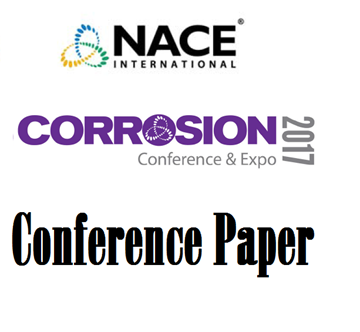Search
Conference Papers
View as
Sort by
Display
per page
UNS S31400 Stainless Steel as Reactor Material in a Thermal Cracking Process
Product Number:
51317--9320-SG
ISBN:
9320 2017 CP
Publication Date:
2017
$20.00
UNS S32707 Combined to UNS S31266; An Alternative to Titanium for Seawater-Cooled Heat Exchangers
Product Number:
51317--9421-SG
ISBN:
9421 2017 CP
Publication Date:
2017
$20.00
Unsaturated Polyester Coatings Curing Kinetics. How to Ensure High Production Efficiency for Offshore Wind Foundation
Product Number:
51324-20934-SG
Publication Date:
2024
$40.00
Unveiling the Mechanical Feasibility of Glass Reinforced Plastic for Post Combustion CO2 Capture Amine Service: A Thorough Examination
Product Number:
51324-20710-SG
Publication Date:
2024
$40.00
UP Periscope: Hunting for the Scope of Work
Product Number:
51217-044-SG
Publication Date:
2017
$20.00
Upcoming Changes To NSF Drinking Water System Components Program (NSF 600) - No Need To Be Afraid
Product Number:
51322-18136-SG
Publication Date:
2022
$20.00
Update on eSCC Case Studies and Guidelines for SCC Prevention
Product Number:
51312-01137-SG
ISBN:
01137 2012 CP
Publication Date:
2012
$20.00
Update on Mitigation of Mic Steel in A Marine Environment with Coatings
Product Number:
51219-209-SG
Publication Date:
2019
$20.00
Update on the Evaluation of Grout Robustness and Corrosion by Accelerated Corrosion and Rapid Macrocell Testing
Product Number:
51321-16339-SG
Publication Date:
2021
$20.00
Update to SSPC-PA 9 Paint Application Specification
Product Number:
41216-945-SG
Publication Date:
2016
$20.00
Updating ASTM D7091 Standard Practice for Coating Thickness Measurement
Product Number:
51218-088-SG
Publication Date:
2018
$20.00
Upset Conditions In Anaerobic Digesters In Wastewater Treatment Plants Cause Degradation Of Protective Linings
Product Number:
51322-18235-SG
Publication Date:
2022
$20.00














